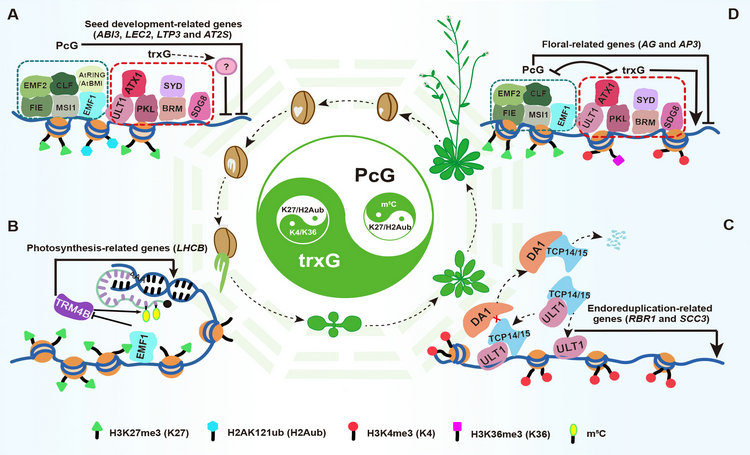Recently, Dr. Li Pu’s group from Biotechnology Research Institute of Chinese Academy of Agricultural Sciences, summarizedtrxG’s active and repressive role in gene regulation to highlight the importance of elucidating the mechanism of the opposing crosstalk, cooperative vs. antagonistic, between Polycomb (PcG) and trithorax (trxG)proteins. The work, entitled “Polycomb and trithorax: their Yin-Yang dynamics in plants”, was published in Molecular Plant.
PcG and trxG are two conserved epigenetic complexes involved in plant development and stress responses. PcG and trxG proteins act in an epigenetic fashion to maintain active and repressive states of target genes by altering their chromatin states. The conventional view is that PcG and trxG function antagonistically in gene transcriptional regulation as a result that mutations in trxG and PcG genes can counteract each other’s activity, whereas mutations of genes within each group have synergistic effects. Despite this general trend, accumulating data suggest there is no overall synergism or antagonism between and within the trxG and PcG proteins and, instead, a nuanced and intricate synergistic interaction, establishing a mutual regulatory relationship between PcG and trxG.The intricate decision whether a gene should be active or repressed in different contexts is finely tuned by the activities of trxG and PcGproteins, reflecting the essence of yin and yang that are in relative equilibrium to keep the whole in a stable state.

Figure 1.The Yin-Yang activities of PcG and trxG proteins that regulate different aspects of plant development.
This work was supported by the funding from the Science and Technology Innovation 2030 Major Projects (2023ZD04076 and 2023ZD0407304, 2022ZD0115703).
More details can be found at the link:https://doi.org/10.1016/j.molp.2024.05.005 |